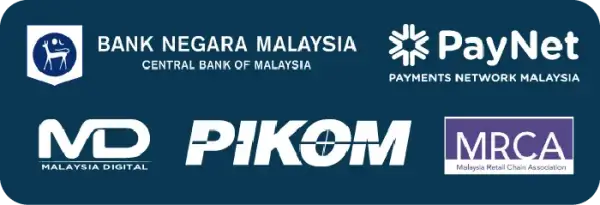
Disclaimer: This article is for informational and educational purposes only. It does not constitute financial, legal, or technical advice. References to any brands or gateways do not imply endorsement unless stated otherwise.
The Engine Powering Every Online Transaction
When customers pay through your website or app, the transaction seems instant. Behind that speed is a network of encrypted communications managed by one tool: the Payment Gateway API.
In Malaysia’s fast-digitising economy, SMEs depend on this invisible layer to move money securely between buyers, banks, and businesses. Without it, even the most attractive website can not complete a sale.
This article explains what a payment gateway API is, how it works, and why understanding it is crucial for every small and medium enterprise operating online today.
What Is a Payment Gateway API?
A payment gateway API is the coded link that connects your online platform directly to financial institutions and payment networks, allowing customers to pay you quickly and safely, subject to provider and network performance.
Each time a customer checks out, the API encrypts their details, sends them to the bank or e-wallet provider, and returns an approval result, all in seconds. It eliminates manual verification and minimises errors, enabling automated transactions end-to-end.
(Sources: PCI Security Standards Council; Bank Negara Malaysia)
Core Functions
- Data encryption: Protects card and wallet information from interception.
- Authorisation: Confirms whether the buyer has sufficient funds or credit and verifies identity where required.
- Settlement: Ensures funds move from the customer’s account to the merchant’s.
- Refunds and payouts: Automates post-sale operations.
- Recurring payments: Supports subscriptions and auto-billing.
Payment APIs are the foundation of digital commerce, whether you are a retail SME, online educator, or SaaS provider.
Why Payment Gateway APIs Matter for Malaysian SMEs
Digitalisation in Malaysia is accelerating under initiatives such as MyDIGITAL and Bank Negara Malaysia’s Financial Sector Blueprint 2022–2026, both of which promote safe, efficient digital payments and API-enabled innovation. APIs are central to this shift.
(Source: Bank Negara Malaysia)
1) Faster and More Reliable Transactions
Consumers expect instant confirmation. An integrated API can process approvals within seconds, reducing checkout abandonment and helping you capture revenue immediately.
2) Support for Local Payment Methods
A good API connects to FPX (online banking), DuitNow QR (the national QR standard), and e-wallets like Touch’n Go, GrabPay, and ShopeePay, matching Malaysia’s multi-channel consumer preferences.
3) Compliance and Trust
- Choose providers that validate PCI DSS compliance (Level 1 for high-volume service providers) to protect card data end-to-end and ensure alignment with Malaysia’s regulatory requirements where applicable.
- In Malaysia, BNM’s Risk Management in Technology (RMiT) policy sets technology-risk requirements for regulated financial institutions such as banks, approved e-money issuers, and designated payment system operators.
- Many payment gateways fall under these regimes depending on their licensing and role. This framework reduces fraud exposure and builds trust with partners and regulators.
(Sources: Bank Negara Malaysia – Risk Management in Technology (RMiT) Policy Document, June 2023; RMiT Exposure Draft, Nov 2024)
4) Lower Operational Burden
APIs automate recurring payments, reconciliation, and invoicing, allowing SMEs to focus on growth rather than manual banking tasks.
5) Scalability and Cross-Border Reach
As more SMEs sell to neighbouring countries, APIs supporting multi-currency payments (e.g., MYR, SGD, USD) simplify international expansion and settlement.
How a Payment Gateway API Works
Understanding the flow helps SMEs spot integration issues early. Every step is automated, giving customers instant confirmation and businesses clear records. Here is how the process typically unfolds:
- Customer initiates payment: The buyer enters details or scans a QR code on your checkout page.
- API encrypts and transmits data: Sensitive data is tokenised and sent through a secure channel to the payment gateway.
- Bank or wallet verifies the transaction: The issuing institution authenticates the user (e.g., 3-D Secure for cards where applicable), checks available funds, and approves or rejects.
- Gateway returns result via the API: The API communicates success or failure back to your system in milliseconds.
- Settlement and reconciliation: Approved transactions are batched, settled, and reported through dashboards for easy accounting integration.
(Source: PCI Security Standards Council)
Key Aspects of a High-Quality Payment Gateway API
1) Security and Compliance
- Non-negotiable. The API should use TLS 1.2+ (Transport Layer Security versions 1.2), tokenisation, and fraud-detection layers. (Source: PCI Security Standards Council)
- Only consider providers with appropriate PCI DSS validation (Level 1 for high-volume service providers).
- For Malaysia, ensure the provider’s regulatory posture aligns with BNM requirements for the roles they perform.
2) Integration Simplicity
- Choose APIs with detailed documentation, SDKs, and plug-ins for WooCommerce, Shopify, or WordPress.
- Many SMEs can integrate within hours using plugins/SDKs, but timelines vary by platform, scope, and onboarding/approval steps.
3) Reliability and Uptime
- Any downtime means revenue loss. Leading gateways publish status pages and target ≥99.9% uptime with redundancy and 24/7 monitoring.
- Always check each provider’s SLA and historical status before deciding.
4) Multi-Currency and Cross-Border Support
- Essential for exporters and service firms billing overseas clients.
- A flexible API connects you to a gateway that supports multi-currency pricing and settlement, with clear and transparent conversion fees
5) Reporting and Analytics
- Look for APIs that include real-time dashboards showing approval ratios, failure reasons, and settlement timelines.
- Data-driven insights help improve success rates and customer experience.
6) Local Method Support
- Malaysian SMEs should prioritise providers that integrate FPX, DuitNow QR, and major e-wallets.
- Local compatibility directly affects conversion rates.
7) Developer and Merchant Support
Round-the-clock technical support and clear documentation save integration time and prevent lost sales during troubleshooting.
Common Misconceptions About Payment Gateway APIs
“Only large corporations need them.”
False. Plug-and-play APIs enable even microbusinesses to accept payments securely without large budgets.
“Bank transfers are safer.”
Not necessarily. Manual transfers can expose account details and introduce human error; APIs use encryption and tokenisation for stronger, standardised protection.
“Integration takes weeks.”
Modern APIs offer sandbox environments and ready SDKs; many SMEs can go live within hours, but timelines vary by platform, scope, and onboarding/approval requirements.
“All APIs charge the same fees.”
Transaction costs vary. Compare processing fees, refund charges, and settlement timing before signing up.
“Using multiple gateways causes errors.”
Most APIs support multi-gateway routing to maximise approval rates and redundancy.
Evaluating the Right Payment Gateway API for Your SME
When choosing a provider, balance cost, compliance, and customer experience.
Checklist for decision-making:
Factor | Why It Matters |
Regulatory Compliance | Ensures data protection and aligns with BNM requirements for relevant roles. |
Supported Payment Methods | Determines accessibility for your customers (FPX, DuitNow QR, e-wallets, cards). |
Fee Structure | Affects margins, especially for low-ticket sales. |
Integration Options | Impacts time-to-market and ongoing maintenance. |
Settlement Speed | Influences cash flow. |
Fraud Prevention | Reduces chargebacks and disputes. |
Customer Support | Vital for operational continuity. |
(Sources for context and policy direction: BNM Annual Report 2024; PayNet publications.)
Future of Payment Gateway APIs in Malaysia
Bank Negara Malaysia’s Financial Sector Blueprint 2022–2026 prioritises open data and API-based innovation to enhance interoperability and competition. This direction supports an “open finance” trajectory, but it does not guarantee full open-banking implementation by 2026. Progress is ongoing as industry and regulators align on standards and safeguards.
Emerging Trends
- Real-Time Payment APIs: Deeper integration with DuitNow rails (e.g., Instant Transfer, QR) and growing cross-border corridors within ASEAN.
- AI-Based Fraud Detection: Machine learning for anomaly detection and adaptive authentication.
- BNPL (Buy Now, Pay Later) Integration: Unified APIs combining credit checks and instalment management.
- Automated Accounting Sync: APIs linking to Xero, QuickBooks, or SQL Malaysia for reconciliation.
For SMEs, staying API-ready means staying competitive in the next wave of Malaysia’s digital transformation.
APIs as the Growth Engine for Modern SMEs
Payment Gateway APIs are no longer optional add-ons, they are the infrastructure enabling Malaysian SMEs to operate efficiently in a digital marketplace.
They deliver speed, security, and automation while aligning with local and global standards. Whether you are selling handmade crafts online or managing subscription-based software, a strong API integration is the key to sustainable growth.
In Malaysia’s increasingly cashless economy, adopting a reliable, compliant payment API today means securing your place in tomorrow’s financial landscape. If you require the assistance of a payment solutions provider in setting up a payment gateway API, reach out to Paydibs and we will help you set things up so your business can thrive!
Frequently Asked Questions About Payment Gateway API
What is the main difference between a payment gateway and a payment API?
A payment gateway authorises and routes transactions; a payment API is the interface that connects your system to that gateway.
Do small businesses really need one?
Yes. Even micro-SMEs benefit from automation, lower fraud risk, and higher checkout success rates.
Is using a payment API safe?
Absolutely, provided the provider validates PCI DSS compliance and aligns with BNM RMiT requirements where applicable to their role in the payments ecosystem.
What are the typical costs?
Costs vary by method and provider
Which APIs are best for local payments?
One of the providers widely used for domestic acceptance is Paydibs. For broader international reach and developer tooling, Stripe and Checkout.com are common choices.
Can I integrate more than one payment gateway?
Yes. Multi-gateway setups increase reliability and customer choice and can improve approval rates.
Our Partners :





Paydibs is a leading payment solutions provider committed to simplifying transactions for businesses of all sizes.

